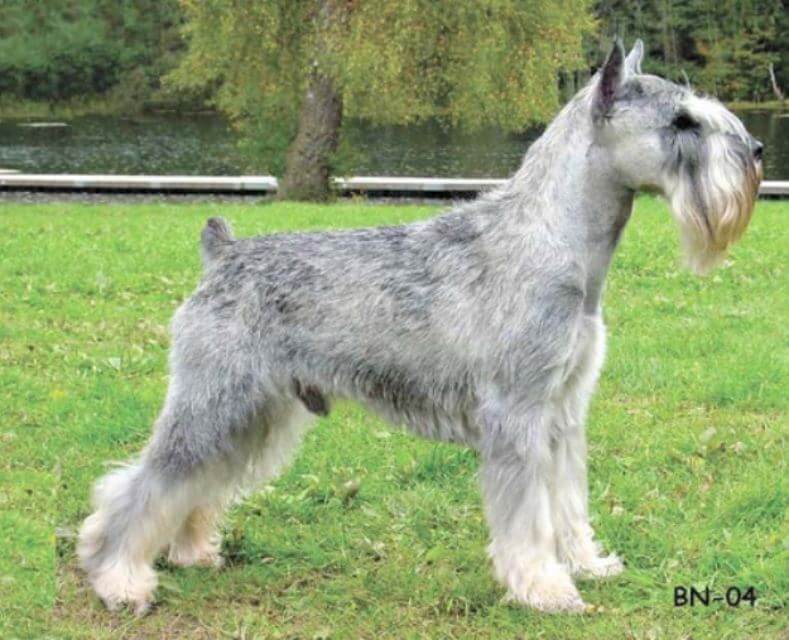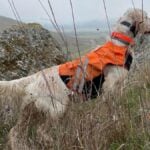
Home » The Standard Schnauzer
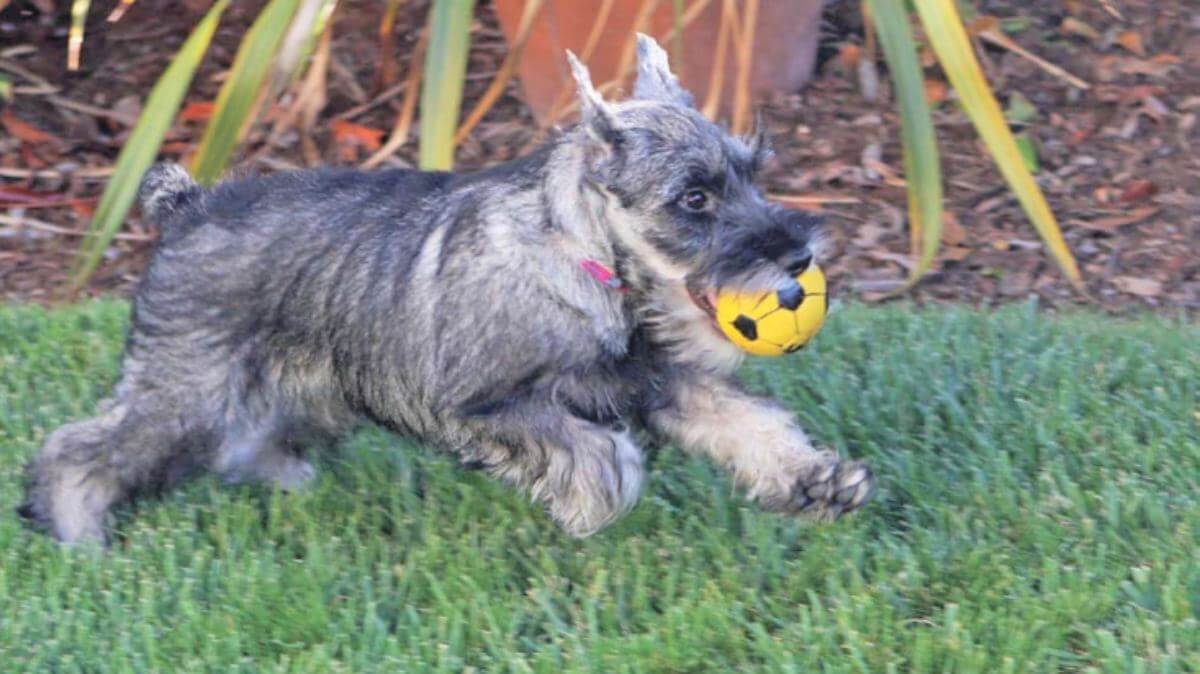
This article was originally published in Showsight Magazine, June 2019 issue.
Our introduction to Schnauzers began over four decades ago in a California suburban yard. While we were there admiring the active litter of ten running and tumbling across the grass, we watched the mother jump a seven-foot fence into the adjacent yard to steal the neighboring dog’s bone. It was a jaw-dropping feat and probably should have been a warning, but, without hesitation, we took home her son. He was our introduction to this strong, determined, intelligent, reliable, and mischievous breed. He was wonderful with our children and their friends, happy to be one of the playgroup. He also was a determined watchdog. We always knew when someone was approaching our front door. Through him, we learned about the Standard Schnauzer.
The breed originated in Southern Germany, where they were farm dogs used to catch rats, herd cattle, and guard the farmstead. They were also used by itinerant peddlers to protect their carts and saw service in WWI as dispatch carriers behind the German lines. They are considered the oldest of the three Schnauzer breeds, the original or prototype. There are some misconceptions about their origins. Due perhaps to their wiry coats, they have sometimes been classed as descendants of British Terriers. There really is no evidence that they are related to the terriers of Great Britain. In fact, recent genetic testing has indicated that Schnauzers likely evolved from the ancient herding and hunting dogs of continental Europe. It is also believed that the breed is very old, dating back as far as the 15th century. Dogs of this general type likely did exist then, but there is no written record of this breed that long ago. The oldest documented image comes from an 1812 German etching by Johann Klein.

Organized dog shows began in England in 1859, encouraging interest in breeding purebred dogs. Schnauzers made their dog show debut in 1879 in Hanover, Germany, when C. Burger of Leonburg entered his dog ‘Schnauzer’ as a ‘Wire-haired Pinscher of German breeding.’ Some speculate the name Schnauzer came from that first prize-winning show dog. Whether it did or not is unclear. However, it did mark the beginning of an effort in Germany to develop this native breed. The result was the formation of a breed club, writing of a Breed Standard, and in 1902, the publication of the first Stud Book listing 248 Standard Schnauzers going back to birth dates as early as 1880. Breeders began importing Standard and Miniature Schnauzers in numbers in the 1920s. Established breeders, some with large show kennels, were among those buying breeding stock from Germany and Switzerland. Some of their imports were of high quality, many holding European titles and a record of producing high-quality get.
One such import was Mrs. N. Tucker’s CH Claus von Furstenwall, winner of the first National Specialty and a multiple All Breed Best in Show winner. These quality imports helped build a strong foundation for the breed in this country. In 1925, they were shown in the Working Group, then moved into the Terrier group in 1926. In 1945, the Standard Schnauzer Club of America succeeded in having them moved back to the the Working Group where they compete today along with the Giant Schnauzer. The Miniature Schnauzer remains in the Terrier Group. Standard Schnauzers are a good fit in the Working Group as their structure is similar to that of the other square-built working breeds, the Boxer, Great Dane, Doberman Pinscher, Giant Schnauzer, and German Pinscher.
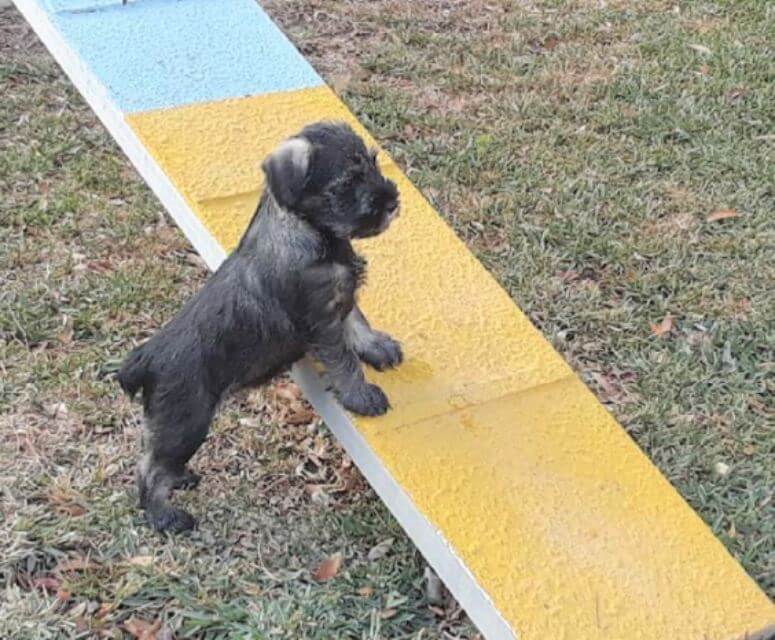
Though coats, size, and head types differ, basic structure is similar in these breeds. Specifics include a body that is well-boned and muscular without coarseness, an arched neck that flows smoothly into a short back, shoulder and forearm of equal length forming a 90-degree angle, a straight backline sloping slightly down from the withers to the tail, pelvis set at 30 degrees, a moderately high tail set, well-angulated rear in balance with the front, and compact cat feet. Proportionately height equals length and depth of chest equals the distance from brisket to ground. For a working dog, the goal in movement is to cover the maximum distance with the least output of energy, which results in good endurance. A smooth, ground-covering trot is the gold standard for judging and an indication of structural soundness. It is an important quality in the Standard Schnauzer.
Though Standard Schnauzer structure is not unique among the square-built working dogs, his coat is. His signature quality is his beautiful, wiry coat—harsh textured and thick, standing up slightly off the back. The color is either solid black or pepper and salt. The pepper and salt outer coat has a very unique color pattern consisting of banded hairs. Not grey, nor any other single color, the hairs in the top coat of the body should be banded black and white. The overall shade or color value is determined by the width and pattern of the black bands on the white hairs. A lack of this banding or a lack of a harsh wiry texture are considered serious faults. Schnauzers also have a fine, soft undercoat. Grey is considered most desirable, but a tan-colored undercoat is not to be faulted in a pepper and salt dog. Black on black describes the color of the black Standard.
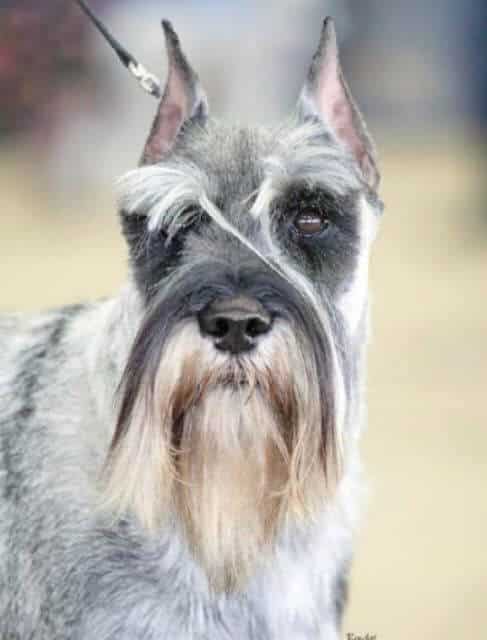
They must have a harsh, wiry top coat and a soft black undercoat to be considered correct. A small white smudge on the chest should not be faulted provided it is smaller than a quarter in size, and greying on the older dog’s muzzle often comes with advanced age and should not be considered a fault. Hair on the legs, called furnishings, are slightly longer than the body coat, but as the Standard reads, “These furnishings should be harsh in texture and not be so profuse as to detract from the neat appearance or working capabilities of the dog. The Standard Schnauzer requires grooming. To maintain a coat in condition for the show ring is time-consuming as the coat on the body must be hand-plucked and the leg hair trimmed and parts of the head and rear machine clipped and/or plucked. The reward is a beautiful dog with very minimal shedding. The alternative for pet owners is machine clipping the coat. Done correctly, it gives the dog a neat appearance.
However, it changes the coat texture so prevents the dog from being shown in the breed ring. Head and expression is the other breed-specific feature that defines breed type. Shaped like a blunt wedge, the head is distinguished by a beard and mustache and distinctive eyebrows. The top skull is the same length as the muzzle and the plane of the skull is parallel to that of the top of the muzzle. Cheeks are muscular but flat. When one looks down on the head with its combed whiskers, it resembles a rectangle. Cropped ears stand up; uncropped ears fold forward in a line with the skull, the inner edges lying along the cheek. Eyes are oval, turned forward and a dark brown in color. The expression is lively and alert. In the show ring, the single disqualification for the breed is size. Males must be 18-20 inches at the withers; females must be 17-19 inches to compete in the conformation ring. The ideal size is the inch in the middle. The most serious fault when judging them concerns temperament.
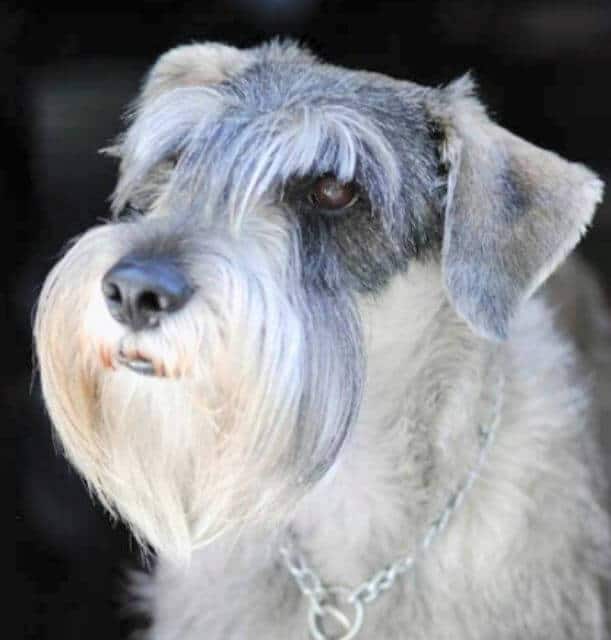
The Breed Standard reads: “When weighing the seriousness of a fault, greatest consideration should be given to deviation from the desired alert, highly intelligent, spirited, reliable character of the Standard Schnauzer.” Though the Schnauzer left the farm long ago, they continue to be a wonderful companion dog with an aptitude for work and a keen intelligence. Of medium size at 35-45 pounds, they can be accommodated in a modest-sized home or apartment, provided the owner provides opportunities to exercise. They require grooming but have the advantage of not shedding copious amounts of hair.
They are often better tolerated by those with allergies than some other breeds. Their level of energy and desire to join into your activities makes them a great companion for those who love going places and doing things with their dogs. They have such a sense of fun. The Tramp character in the Disney story Lady and the Tramp hints at that and is said to have been modeled after a Standard Schnauzer. Our first Schnauzer definitely bore a resemblance to that fictional scamp. That said, they make versatile, loyal companions and are much loved by those of us who share our lives with them.
